When it comes to textile art, many of you will be familiar with the name of Jan Beaney. Often heard alongside that of her friend and fellow textile artist, Jean Littlejohn, together they make up the publishing company Double Trouble Enterprises – originating from a nickname given to them whilst working together in Australia. Established in 1997, the company markets a successful range of books, DVDs and digital workshops, all designed to give students the confidence to design and create their own unique work.
Fascinated by landscape in all its forms, Jan has long specialized in this area. Observation is key to her work and her mantra ‘the more you look, the more you see’ encourages her – and her students – to notice fleeting changes of light and subtle nuances that can be simplified or exaggerated in her textile work.
Jan has been a lecturer since 1959, is a seasoned exhibitor and has run workshops in the UK and around the world. Her list of accolades is endless: she is the longest-serving member of the 62 Group of Textile Artists having joined in 1963, is an Honorary Member of City and Guilds, an Honorary Member and past President of the Embroiderers’ Guild, and a Fellow of Society of Designer Craftsmen – to name but a few. She once had her own series on embroidery on the BBC.
Jan is an expert big at creating fine, lacy fabric based on soluble film to create new, textured cloth, and has published a book on the subject, [easyazon_link identifier=”0955995922″ locale=”UK” tag=”wwwtextileart-21″]Fragile Fabric .
In this article, Jan focuses on her recent set of three pieces entitled ‘Regeneration’, to be shown at her October 2019 exhibition in Maidenhead, UK. Jan describes her process including making initial sketches, building up layers, machine-stitching, hand-stitching and embellishing.
Name of piece: Regeneration
Year of piece: 2019
Techniques and materials used: Hand and machine stitching and embellishing, Soluble films and variety of threads – The piece is one part of a series of three.
Size of piece: 43cm x 43cm
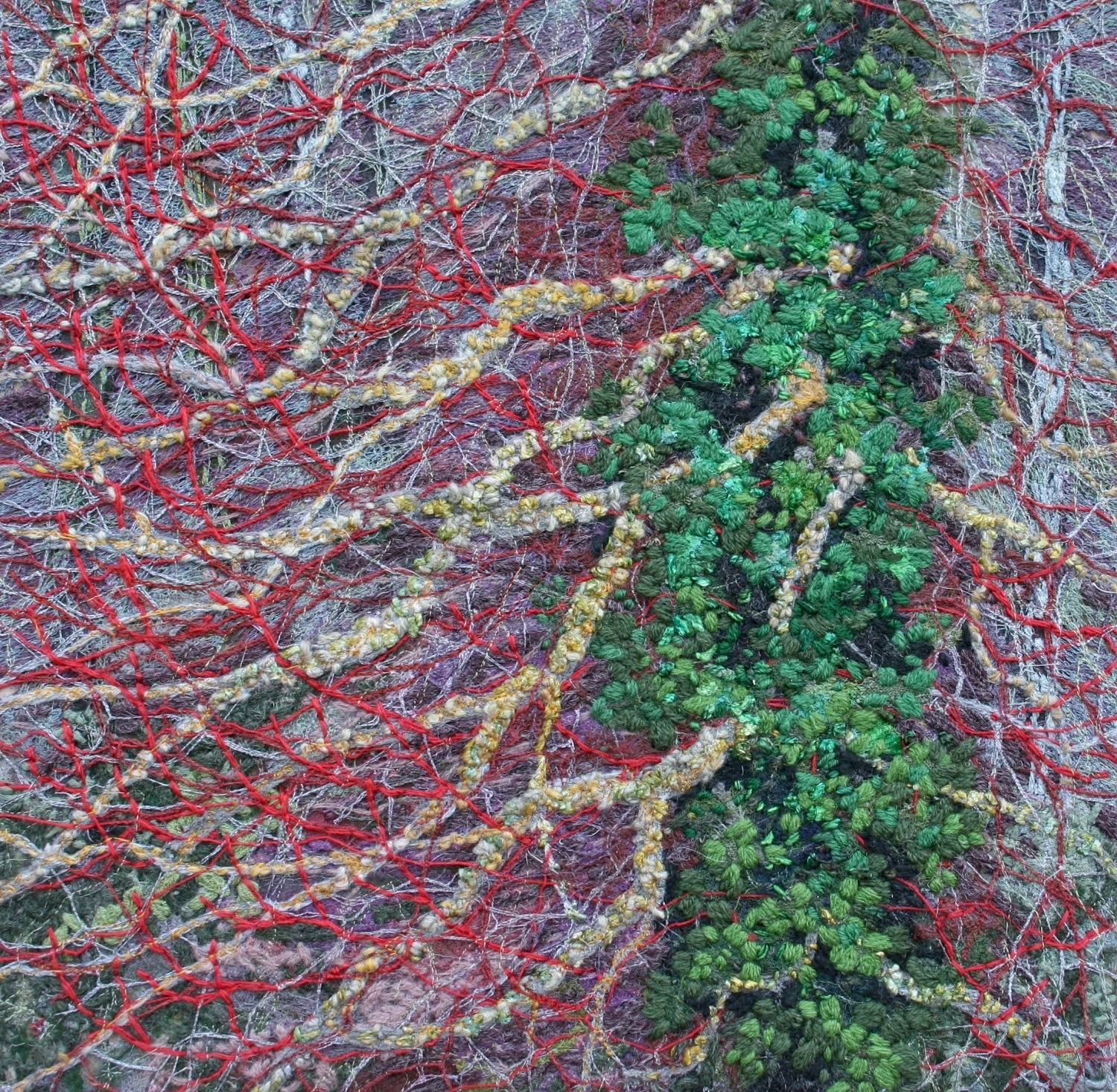
Exaggerate or understate
TextileArtist.org: How did the idea for the piece come about? What was your inspiration?
Jan Beaney: Looking at the hanging woods overlooking the River Thames has intrigued me for some time. I live in Maidenhead and often walk the Thames towpath between my house and the Cliveden Estate. Observing the trees through all seasons and changing weather has revealed to me unusual, beautiful and, at times, weird features.
One day last February, walking along the towpath in a certain light, I noticed a maroon haze between the ivy-clad trees, with their bare main branches growing down towards the water. As I investigated further, I saw through the haze masses and masses of fine new stems, all very bright red in colour. Spring had almost arrived!

What research did you do before you started to make?
Observation is key to my work and, whilst I take some photographs for backup, most of my research is undertaken with many visits to the same location, looking closely and recording or describing what I see in my sketchbook.
Initially, at the actual site, I made drawings in pen and pencils with appropriate colour notes. I often choose to exaggerate or understate the characteristics of the landscapes I survey. When I make sketches, I am already editing and selecting the elements that I want to exaggerate or understate.

Building sandwiched layers
Was there any other preparatory work?
I made thumbnail colour sketches to trial varying compositions in my sketchbook before embarking on four possible designs to scale. I always make a rough design to scale and sometimes go on to develop my designs in colour. For this piece I used Koh-i-Noor dye-based water-soluble paints, adding gouache and acrylics to capture the shades that I had seen and wanted to portray.
I did not like the composition of the fourth design and so chose to discard that in order to develop the first three.
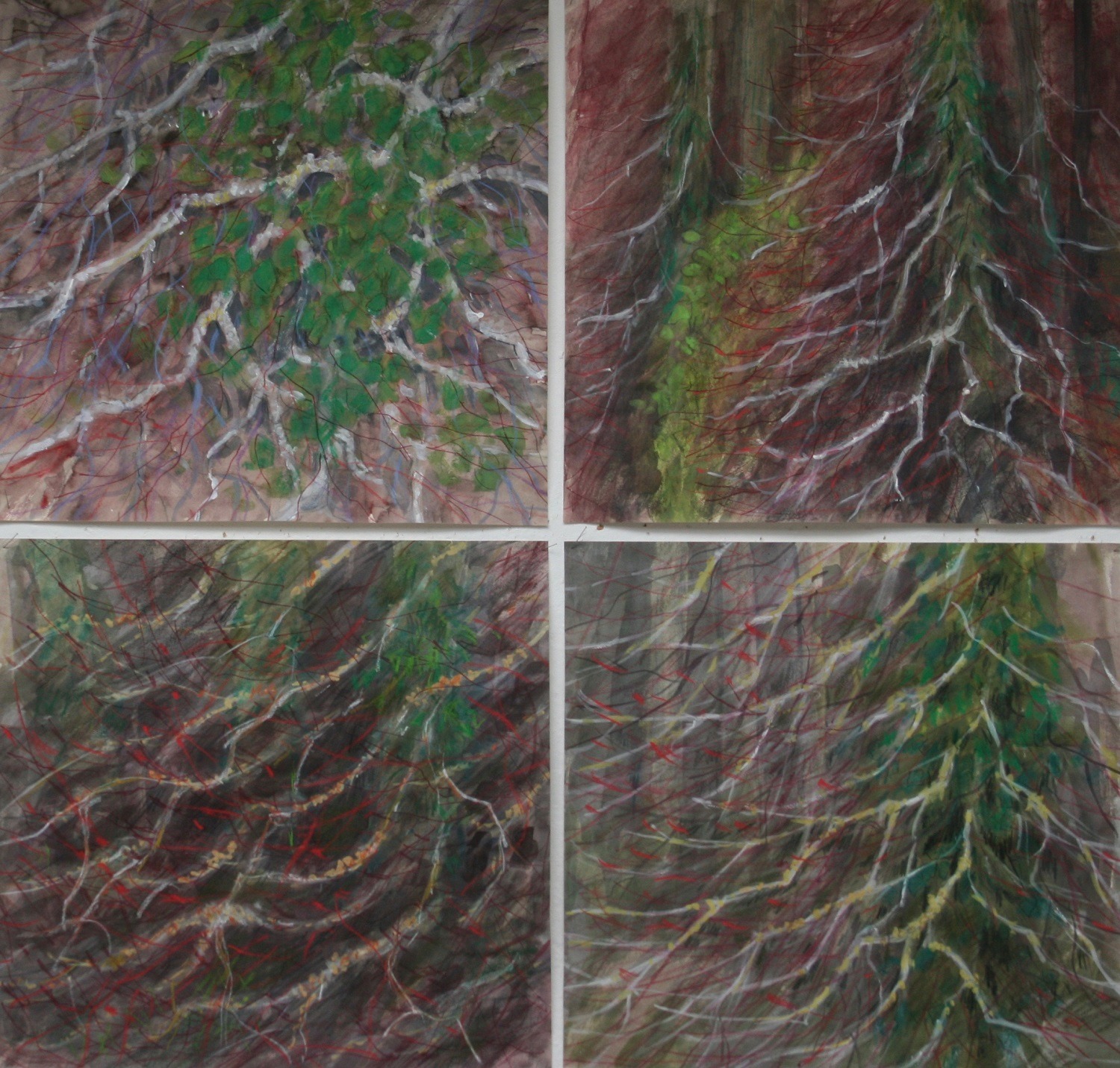
What materials were used in the creation of the piece? How did you select them? Where did you source them?
For my initial sketching, I use an assortment of coloured pencils, many of which are water-soluble, such as Derwent Inktense, Studio, Graphitint and watercolours, Faber Castell, Caran D’Ache Prismalo, and Rexel Cumberland.
I love making fragile fabrics and so I often use soluble film to create a fine, lacy fabric. I decided to use Vlieseline’s Solufix (a self-adhesive and water-soluble embroidery backing on transfer paper) for the initial ground. The soluble fabric is transparent and so it’s easy to see through and develop the textile piece.
I placed small pieces of frayed fabrics on the surface, including knitting, scrims and cut yarns, to build up the design in layers. Once that was complete, I ‘sandwiched’ everything in place with a clear soluble film on top. I used a heavy-duty clear film that I get from Art Van Go; I buy most of my art materials and soluble film from them, and sometimes from Solvy. I also buy rolls of Solufix and Solufleece from Empress Mills or other shops selling Vlieselene products. Barnyarns are another good supplier of soluble materials.
Sometimes I choose not to use soluble materials, and then I generally use a cotton fabric from Whaleys of Bradford.
I selected matt machine threads in toning colours to link all parts in a flowing and unobtrusive way. I machine-stitched with Madeira Lana machine thread – a thicker yarn – to highlight the new red shoots of the tree.
I buy wools from my local knitting shop – brands such as Rowan, Katia and Appletons – plus other yarns from the shops Loop, Oliver Twists and 21st Century Yarns. I usually have a BIG buying session at the Knitting and Stitching Show at Alexandra Palace!

Combining with stitch and embellishing
Take us through the creation of the piece stage by stage
After visiting the site multiple times and doing my initial sketches, I developed these at home using Koh-i-Noor colours and coloured pencils. This allowed me to respond to and exaggerate my memories of the complementary colours of red and green.
I go into more detail about the art materials and my preferred ways of using them in the Double Trouble DVD, Interpretations. There is a 15 minute shortened video on Galli Creative’s YouTube channel.
I placed the design that I had drawn beneath the Solufix film, enabling the image to show through and provide a guide.
I made the first layer of my picture and left a wide border of the sticky surface around the edges to ensure a secure covering for when another layer of soluble film was added. At this point I decided to make a second layer in a similar way – this builds up the layering and makes it more interesting.
The next stage was to combine the two layers by free motion machine stitches and to use the embellishing machine to integrate and blend all the elements together. This was the trickiest part – the layering of two layers of machine-made lace to become one integrated whole.
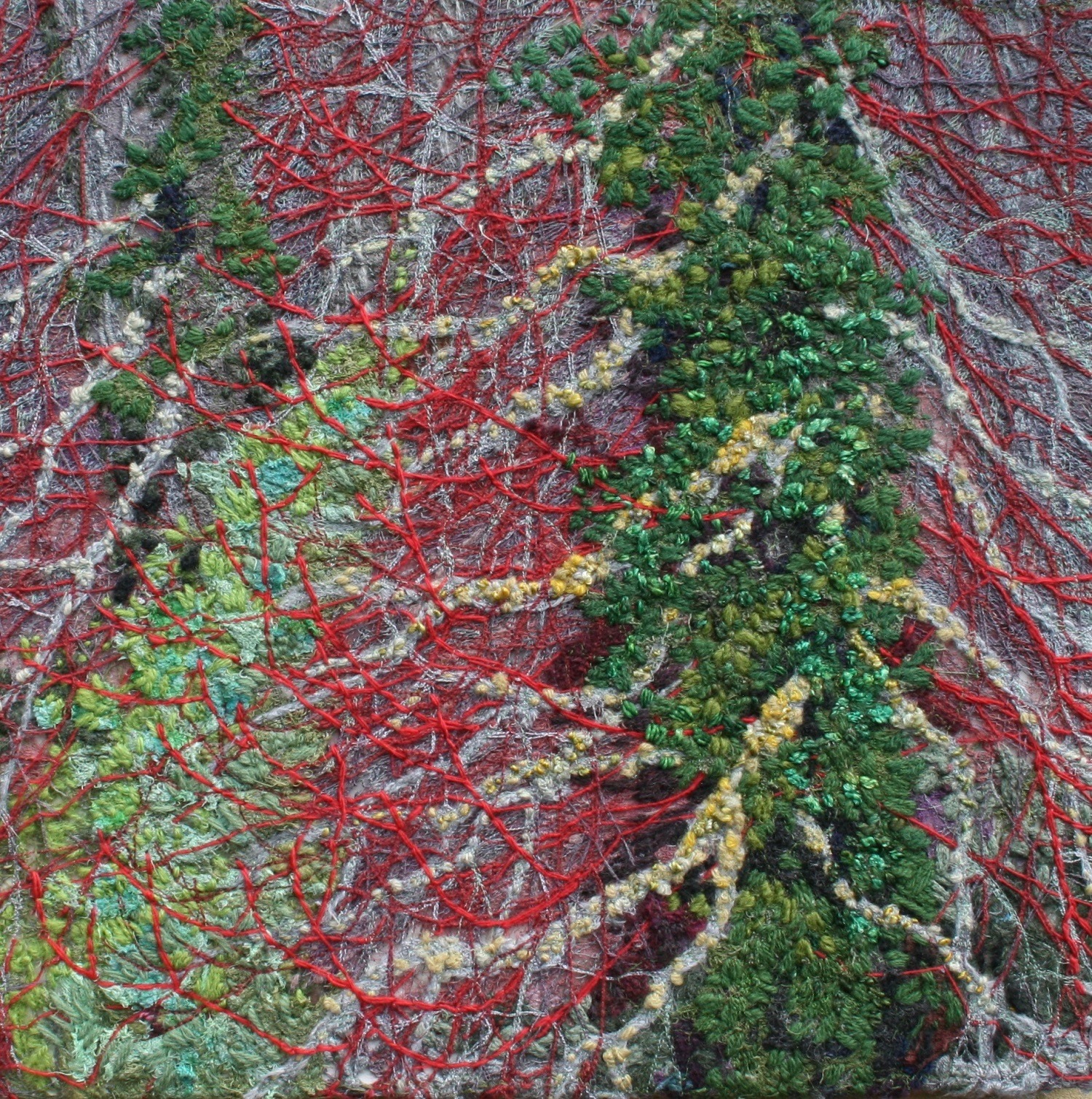
Everyone can learn to do what I do – but you have to learn how to do it in layers – you can’t do the whole picture in one go.
I then proceeded to work many layers of hand stitching, using a variety of wools and cotton, to further develop the surface and image.
The work was damp-stretched several times during the working process to straighten the fabric and give time to review and assess the overall look and progress.
Before washing away the soluble film, I always check the back of the work to make sure that all areas have been linked by machine or hand stitches. If not – it may fall apart!
I washed the work out in several bowls of tepid water to clear away all stickiness, stretched, shaped and pinned it out on a board and left it to dry – I have a wall covered in a board that I can pin into.
Luckily I didn’t have too many holes to repair! If the piece turns out with holes that are small, I mend them by hand. If they are bigger, then I machine them with a soluble film beneath as a stabiliser.
Finally, the embroidery was laced over stiff card ready to be framed and I chose an Ikea recessed frame for this.
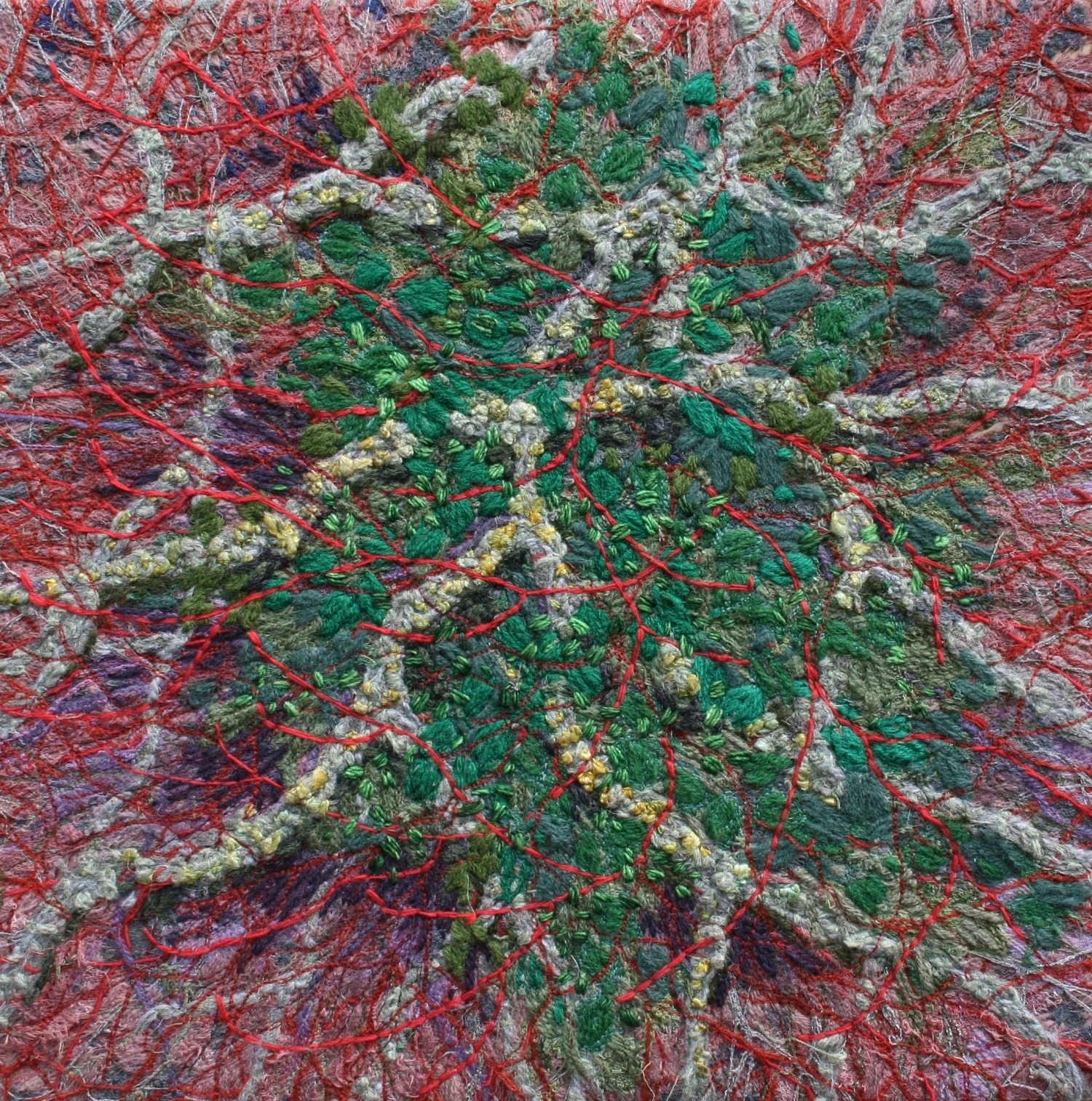
What journey has the piece been on since its creation?
Out of the four designs initially made, three were completed. They were entitled ‘Regeneration – February 1, 2, 3’ and are part of the exhibition, ‘Side by Side’, held with my friend and colleague, Jean Littlejohn, at Norden Farm Arts Centre, Maidenhead, UK from 22 October – 3 November 2019.
My theme for this exhibition is based around the Cliveden Estate; its hanging woods, gardens and river frontage.
Jean’s work is inspired by Taplow Court, the adjoining estate to Cliveden – hence the exhibition title ‘Side by Side’.
The pieces have been featured in my most recent book ‘Just One More Thing ……Review, Revisit, Remind’ which I published with Jean in September.
For more information visit doubletrouble-ent.com
Have you had experience of using soluble film in your textile art? If so, we’d love to hear about your projects here
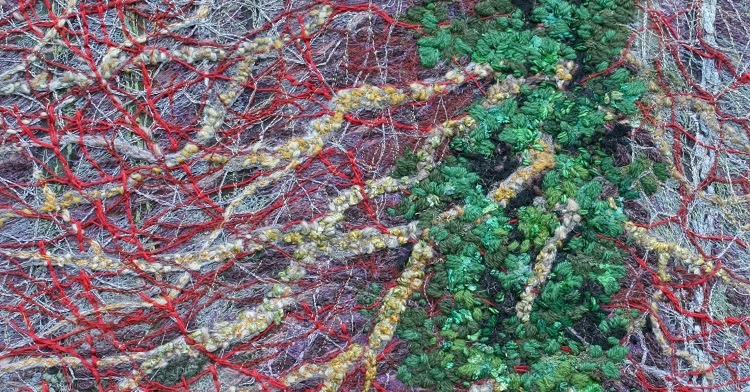
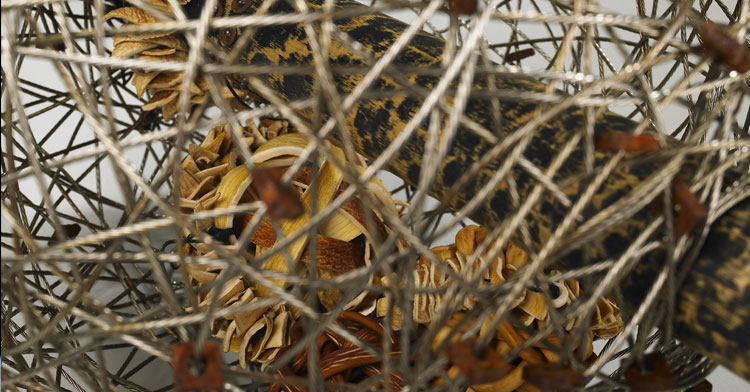
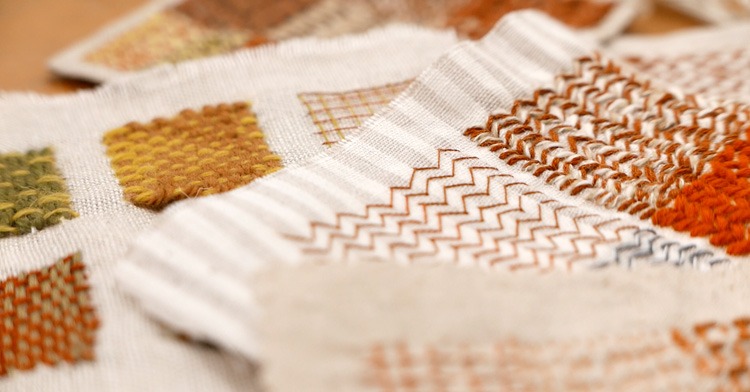
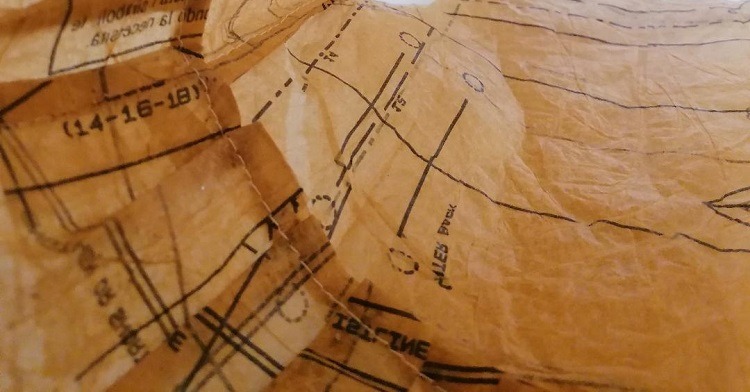
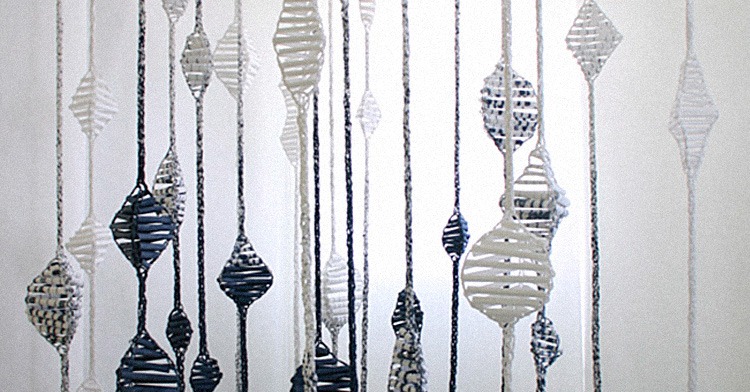
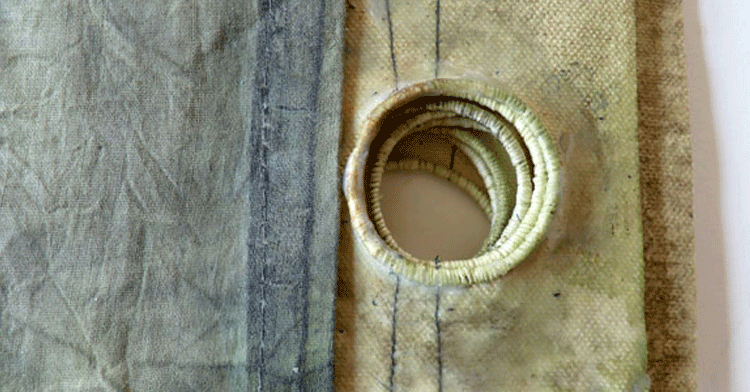
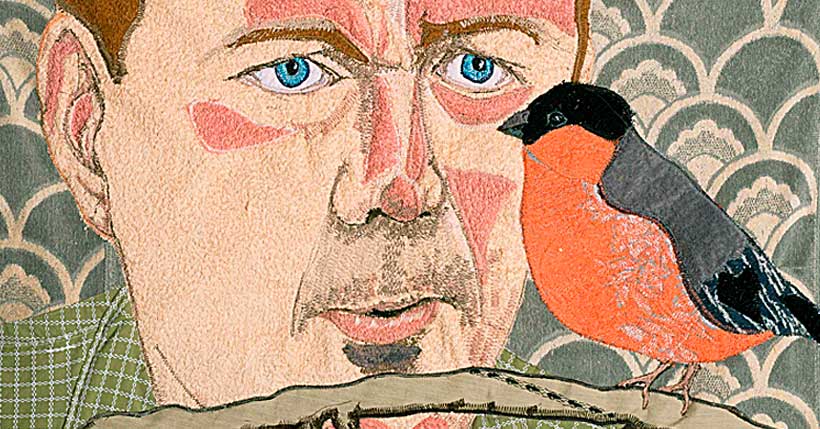
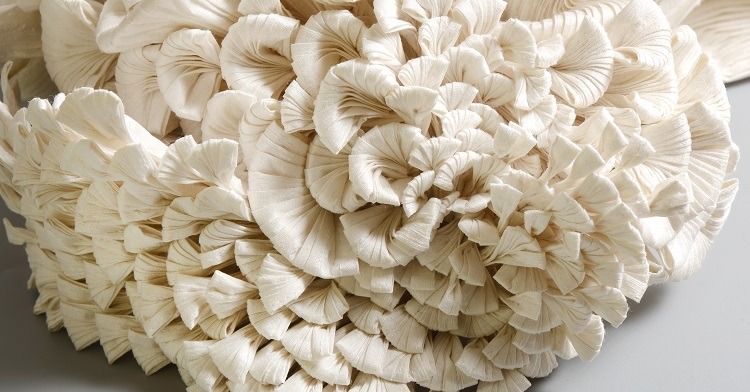
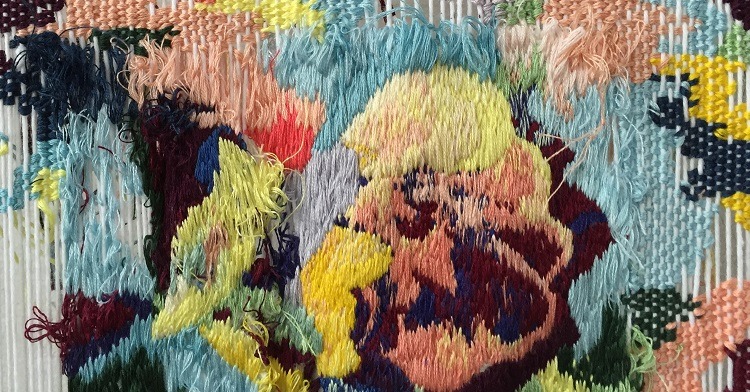
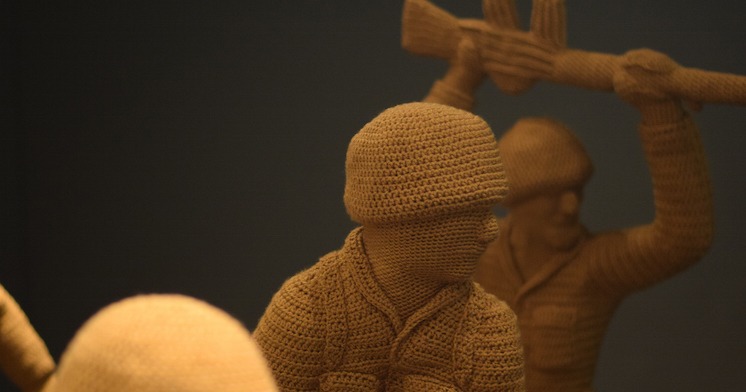
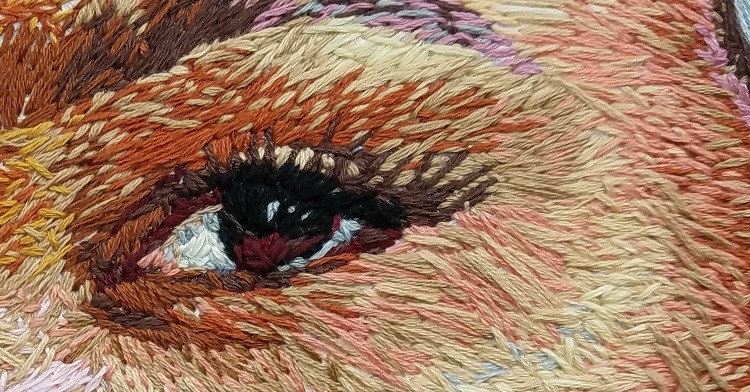
4 comments
Monika
❤
Deb Hulks
Stunning work.
Mary Chidlow
Have admired Jan Beaney’s work for many years . Thank you for sharing her latest work .
ARNAB
Great work.